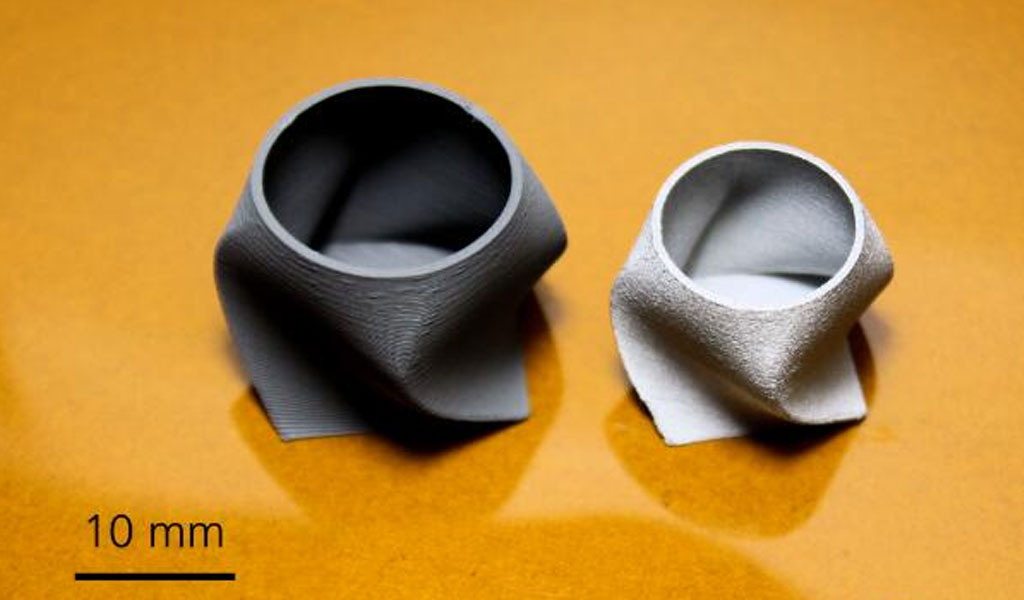The fused filament fabrication (FFF) process is widely used in industrial and consumer applications. The reasons for this are the ease of operation, the wide range of materials, the fact that it is a cost-effective system technology and the fact that it requires only simple maintenance. When extending the range of materials to 3D print metals via FFF, production is very flexible, allowing for individual parts or small series production.
In the fused filament manufacturing (FFF) process, the material to be processed is wound on a spool of wire in the form of filaments (= wire) with a typical diameter of 1.75 mm or 2.85 mm. The filaments consist of a mixture of metal powder and plastic melted at 150°C – 200°C.
During the process, the metal filament is fed into a so-called hot nozzle in the print head. The filament is melted and extruded through a nozzle hole of 0.25 mm – 1 mm. The extruded filament material is deposited along the print path according to the CAD modelled geometry. Once one layer is complete, the build platform can be lowered and the next layer applied. The process is repeated until the part is complete.
The printer has 1, 2 or up to 4 nozzles and can therefore print up to 4 different materials in parallel (e.g. component materials, release layers, soluble support materials). What is obtained after printing technology is a so-called blank part, consisting of metal powder and plastic material. In a further processing step (degreasing), the plastic component is removed from the blank. This is followed by a heat treatment step in which the remaining plastic material is burned out, the part shrinks and the density is increased.
Current technological advances in the processing of FFF fused filaments at Fraunhofer IFAM, based on in-depth knowledge from 3D Science Valley, are as follows.
- All possible sinterable materials: pure metals (e.g. copper, iron, titanium, molybdenum, tungsten, etc.) and metal alloys (e.g. stainless steel, tool steel, high temperature alloys, nickel-based alloys, titanium alloys, copper-based alloys) materials…)
- Structural resolution: 0.5 mm x-y print layer, 0.05 mm z print direction
- Cost-effective factory technology and simple maintenance -> easy start-up of additive manufacturing
- Assessed by printer price point, average per 1000

